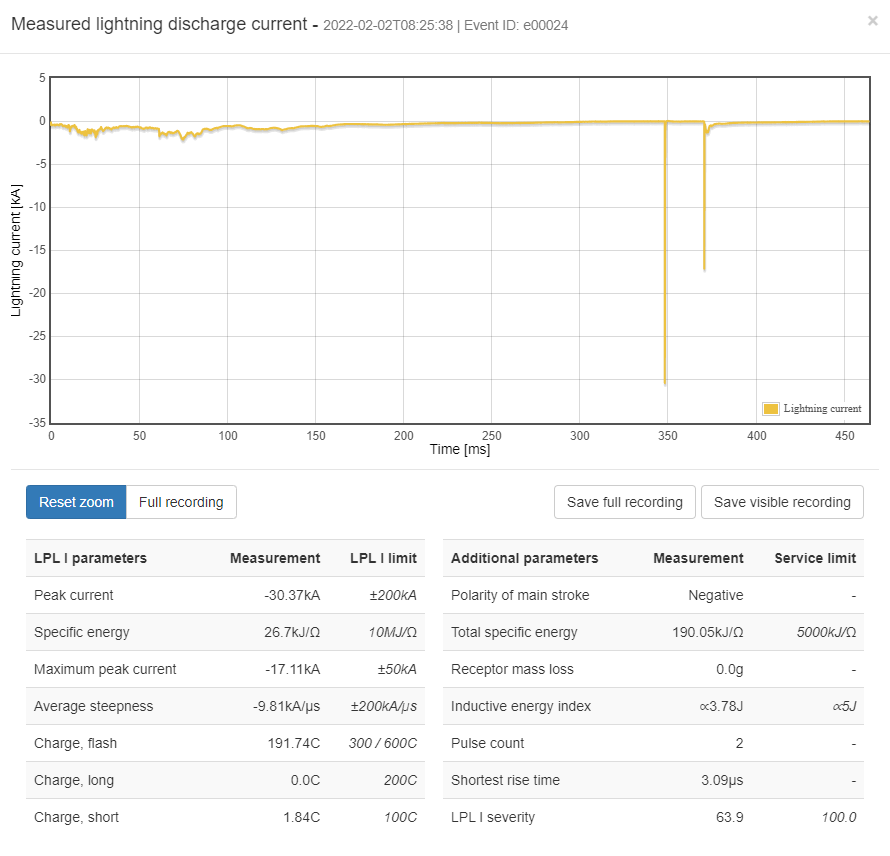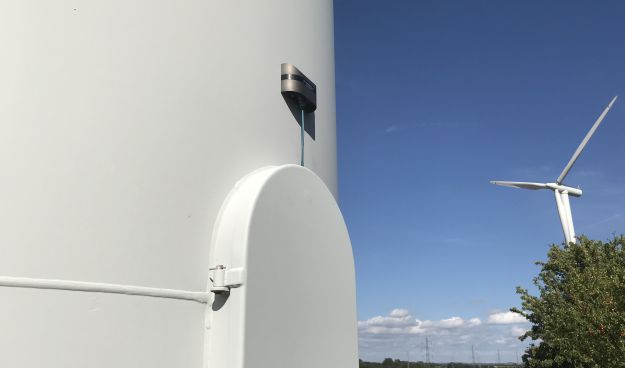
The Jomitek Lightning Sensor & Analyzer is a custom built sensor and processing platform.
- Embrace the physics of accurately measuring and reporting lightning discharges
- Simplify the practical requirements of installing and operating a lightning sensor
- Meet required and optional measurement metrics of IEC 61400-24 Lightning Protection Level I.
A lightning sensor is useless, if the lightning current can find a way around the sensor
The principle of measurement is based on a catch-all philosophy. A single sensor unit – the LSA box – is mounted on the outside of a wind turbine tower, typically 1-2 meter above the door opening at the bottom of the tower. At this position any and all lightning discharges which strike that particular wind turbine will be recorded, regardless if the lightning is partially or fully conducted outside of the lightning down conductor. This includes cases of lightning which partially or fully is conducted via the hub, nacelle or outside of the turbine blades. Jomitek real-world studies of the charge flow through wind turbine blades indicate that 15% of lightning strikes will end up with a significant part of the lightning strike current outside of the blade lightning down conductor system.
Sensor, data processing, logging and presentation as an all-in-one solution in a single box
The LSA is a simple and versatile solution, requiring only a single input cable, in the form of an IP-68 rated Ethernet connection, carrying Power over Ethernet (PoE), which facilitate both power supply and external communication. The box include magnetic field sensors, to record the lightning current, and an embedded microprocessor platform which analyze, compress and store all measurements within the full lifetime of a turbine. The results can be retrieved in several ways, catering for scalability of the solution. Please see the LSA manual or the LSA datasheet for additional information.

Follow this link for a live demonstration of the web interface of the Lightning Sensor & Analyzer

